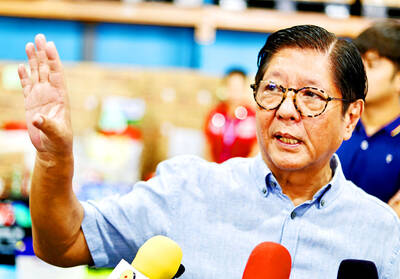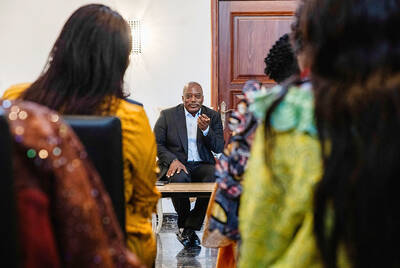Scientists have developed what they say could become the world's smallest medical kit: a computer made of DNA that can diagnose disease and automatically dispense medicine to treat it.
The computer, so small that a trillion would fit into a drop of water, now works only in a test tube, and it could be decades before something like it is ready for practical use.
But it offers an intriguing glimpse of a future in which molecular machines operate inside people, spotting diseases and treating them before symptoms appear.
"Eventually we have this vision of a doctor in a cell," said Ehud Shapiro of the Weizmann Institute of Science in Rehovot, Israel, who led the research, whch was published online Wednesday by the journal Nature.
DNA's role is to store and process information, the genetic code. So it is not surprising that DNA can be used for other computing tasks as well, and scientists have used it to solve mathematical problems.
However, the Israeli scientists said theirs was the first DNA computer that could have a medical use.
The computer, a solution of DNA and enzymes, was programmed to detect the kind of RNA (a DNA cousin) that would be present if particular genes associated with a disease were active.
In one example, the computer determined that two particular genes were active and two others inactive, and therefore made the diagnosis of prostate cancer. A piece of DNA, designed to act as a drug by interfering with the action of a different gene, was then automatically released from the computer.
Experts called the work ingenious but pointed out that it had been done in a test tube to which the RNA corresponding to the disease genes was added. It is not clear, they said, whether such a computer could work inside cells, where there would be an abundance of DNA, RNA and chemicals that could interfere with the reactions.
"I think it's very elegant -- it's almost like a beautiful mathematical proof," said George Church, professor of genetics at Harvard Medical School. "But it's not working in human cells yet."
DNA has intrigued some computer scientists since 1994, when Len Adleman of the University of Southern California showed it could be used to solve a mathematical problem.
People in the field then began envisioning billions of pieces of DNA undergoing chemical reactions, solving problems too complex for more conventional computers.
Some scientists have since concluded that it will be difficult to get DNA computers to match the power of electronic computers.
But Shapiro, who is also in the Weizmann Institute's department of biological chemistry, decided to focus on a DNA computer for use in the body, where silicon would have a hard time competing.
And rather than trying to build the DNA equivalent of a supercomputer, or even a wristwatch calculator, he made a device so simple that it can barely be called a computer.
It has two states, "yes" and "no," and changes from one to the other on the basis of a single variable, like the presence or absence of the RNA it is looking for. If at the end of a series of steps it is in the "yes" state, the diagnosis is positive.
The Weizmann DNA computer encodes both the software and the data in the four letters of the genetic code, A, C, G and T.
The "hardware," the part of the computer that does not change, is an enzyme that cuts the strands of DNA in a particular way.
The computer is made of double-stranded DNA with ends that are single-stranded. These so-called sticky ends can bind to specific other strands of DNA or RNA in the solution under the usual rules of DNA pairing.
If binding occurs, the enzyme cuts the DNA a certain distance away, exposing new sticky ends. If those ends find something to bind to, the enzyme cuts in yet another location, and so on.
If the chain reaction proceeds in a certain way, the enzyme eventually slices off the piece of DNA that acts as the drug.
After the DNA encoding the problem is made and put in the test tube, the computer works automatically and arrives at the answer in minutes.
"Basically," Shapiro said, "we just drop everything in solution and see what happens."

FOREST SITE: A rescue helicopter spotted the burning fuselage of the plane in a forested area, with rescue personnel saying they saw no evidence of survivors A passenger plane carrying nearly 50 people crashed yesterday in a remote spot in Russia’s far eastern region of Amur, with no immediate signs of survivors, authorities said. The aircraft, a twin-propeller Antonov-24 operated by Angara Airlines, was headed to the town of Tynda from the city of Blagoveshchensk when it disappeared from radar at about 1pm. A rescue helicopter later spotted the burning fuselage of the plane on a forested mountain slope about 16km from Tynda. Videos published by Russian investigators showed what appeared to be columns of smoke billowing from the wreckage of the plane in a dense, forested area. Rescuers in

POINTING FINGERS: The two countries have accused each other of firing first, with Bangkok accusing Phnom Penh of targeting civilian infrastructure, including a hospital Thai acting Prime Minister Phumtham Wechayachai yesterday warned that cross-border clashes with Cambodia that have uprooted more than 130,000 people “could develop into war,” as the countries traded deadly strikes for a second day. A long-running border dispute erupted into intense fighting with jets, artillery, tanks and ground troops on Thursday, and the UN Security Council was set to hold an emergency meeting on the crisis yesterday. A steady thump of artillery strikes could be heard from the Cambodian side of the border, where the province of Oddar Meanchey reported that one civilian — a 70-year-old man — had been killed and

Philippine President Ferdinand Marcos Jr is to meet US President Donald Trump this week, hoping Manila’s status as a key Asian ally would secure a more favorable trade deal before the deadline on Friday next week. Marcos would be the first Southeast Asian leader to meet Trump in his second term. Trump has already struck trade deals with two of Manila’s regional partners, Vietnam and Indonesia, driving tough bargains in trade talks even with close allies that Washington needs to keep onside in its strategic rivalry with China. “I expect our discussions to focus on security and defense, of course, but also

‘ARBITRARY’ CASE: Former DR Congo president Joseph Kabila has maintained his innocence and called the country’s courts an instrument of oppression Former Democratic Republic of the Congo (DR Congo) president Joseph Kabila went on trial in absentia on Friday on charges including treason over alleged support for Rwanda-backed militants, an AFP reporter at the court said. Kabila, who has lived outside the DR Congo for two years, stands accused at a military court of plotting to overthrow the government of Congolese President Felix Tshisekedi — a charge that could yield a death sentence. He also faces charges including homicide, torture and rape linked to the anti-government force M23, the charge sheet said. Other charges include “taking part in an insurrection movement,” “crime against the